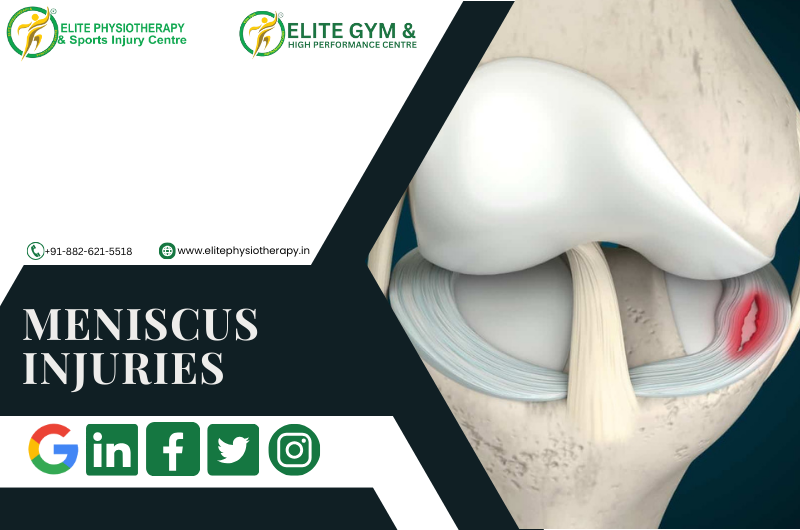The condition known as ankle impingement is characterized by pain and restricted ankle joint range of motion (ROM) brought on by the trapping of soft tissues or bony structures. Athletes and people who do repetitive ankle motions, especially in sports like football, basketball, and gymnastics, are frequently affected by this condition. Our specialty at Elite Physiotherapy and Sports Injury Centre is offering complete care for ankle impingement using cutting-edge physiotherapy techniques and advanced diagnostic techniques.
Understanding Anterior Ankle Impingement
When soft tissues or bone spurs in the front of the ankle are compressed during dorsiflexion, it results in anterior ankle impingement, sometimes referred to as “footballer’s ankle.” Repetitive stress or trauma frequently causes this illness, which results in fibrosis, inflammation, and the development of bony outgrowths called osteophytes.
Causes and Mechanism of Injury
- Repetitive Microtrauma: Anterior ankle impingement can result from repeated dorsiflexion motions, such as those made during kicking, jumping, or running.
- Acute Injury: The condition may be brought on by a single traumatic incident, such as falling awkwardly after a jump or receiving a direct strike to the ankle.
- Ankle Instability: People with a history of ankle sprains or chronic ankle instability may be more susceptible to impingement.
Example Mechanism of Injury:
The anterior tissues of the ankle sustain microtrauma and recurrent dorsiflexion from football players’ forceful kicks at the ball. Anterior ankle impingement is the outcome of inflammation and bone spur formation over time.
Signs, Symptoms, and Clinical Features
- Ankle pain at the front, particularly when engaging in dorsiflexion-related activities.
- swelling in the area of the ankle.
- restricted range of motion, especially when it comes to dorsiflexion.
- An ankle “catching” or “locking” sensation.
- When the anterior ankle is palpated, it feels tender.
- Difficulty squatting, running, or climbing stairs, among other activities.
Diagnosis at Elite Physiotherapy and Sports Injury Centre
To properly identify anterior ankle impingement, our clinic uses a mix of functional and physical evaluations. Our strategy consists of:
- Comprehensive Patient History: Knowing the patient’s degree of activity, trauma history, and onset of symptoms.
- Physical examination: Check for crepitus, edema, or soreness by palpating the anterior ankle.
- Functional Assessment: Functional assessment involves identifying mobility restrictions or pain triggers by observing motions such as lunging, jogging, or squatting.
- Special Physiotherapy Tests:
- Forced Dorsiflexion Test: To replicate anterior ankle discomfort, the clinician passively dorsiflexes the patient’s ankle.
- Anterior Joint Line Palpation: Examining the anterior joint line for soreness.
- Single leg Squat Test: Assessing discomfort and functional limits during weight-bearing dorsiflexion with the single-leg squat test.
Advanced Physiotherapy Management
Our emphasis at Elite Physiotherapy and Sports Injury Centre is on customized, evidence-based treatment regimens. To guarantee the best possible recovery, our physiotherapy method combines cutting-edge modalities with practical techniques.
1. Pain Management
- Cryotherapy: Applying cold therapy to the afflicted area reduces pain and inflammation.
- High-Intensity Class 4 Laser Therapy: By deeply entering tissues to encourage cellular regeneration, this treatment promotes tissue healing and lessens discomfort.
2. Manual Therapy
Joint Mobilizations: By focusing on joint constraints, improve ankle dorsiflexion and lessen stiffness.
- Soft Tissue Mobilization: Improves circulation around the anterior ankle and relieves tense muscles.
- Trigger Point Release: This technique eases discomfort and increases range of motion by focusing on particular muscle tense spots.
3. Advanced Modalities
- Shockwave Therapy: Shockwave therapy delivers high-energy sound waves to the damaged area, promoting healing in chronic illnesses.
- CRET (Capacitive Resistive Electric Transfer) Therapy: Using deep heat produced by radiofrequency energy, CRET therapy improves tissue repair and lowers inflammation.
- The Super Inductive System (SIS): Uses electromagnetic stimulation to relieve pain and encourage neuromuscular re-education.
4. Rehabilitative Function
- Strengthening Exercises: To increase ankle stability, concentrate on strengthening the calf, tibialis anterior, and intrinsic foot muscles.
- Proprioception Training: To improve joint position perception and avoid further injuries, perform balancing exercises using wobble boards and stability trainers.
- Gait Training: To guarantee appropriate biomechanics when walking and running, gait training modifies movement patterns.
5. Hydrotherapy
- For individuals with pain or severe movement limitations, our on-site hydrotherapy pool offers low-impact resistance for strengthening and mobility exercises.
6. Prevention and Education
- To stop more injuries, we teach our patients how to warm up properly and change their activities.
- To minimize strain on the ankle joint and improve foot alignment, customized orthotics could be suggested.
Why Choose Elite Physiotherapy and Sports Injury Centre?
Our clinic stands out for its dedication to providing state-of-the-art physiotherapy treatments tailored to meet the needs of every patient. Thanks to our staff’s experience, cutting-edge techniques, and patient-centered methodology, we guarantee thorough treatment for ailments like anterior ankle impingement.
Visit Elite Physiotherapy and Sports Injury Centre if you or a loved one is suffering from ankle pain or restricted mobility. Our all-encompassing strategy guarantees not only recuperation but also a return to optimal performance.





